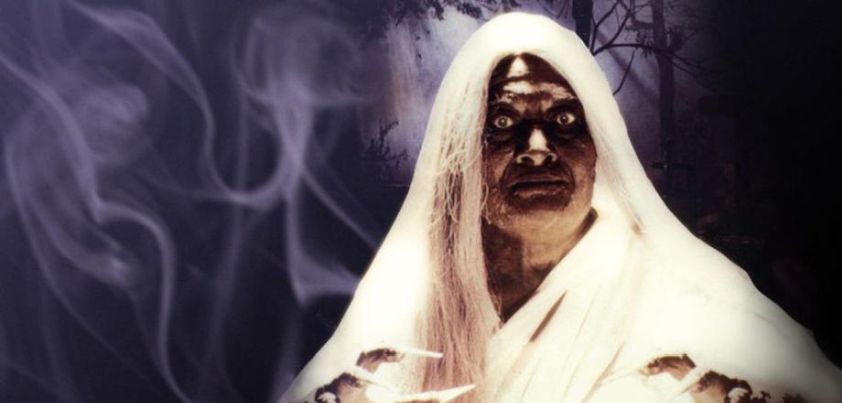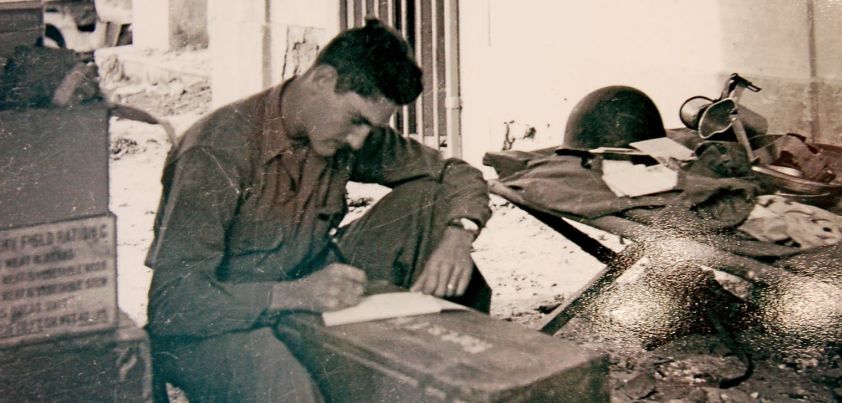 In this story by Alice Walker, a woman daydreams through her wedding ceremony about how her life is about to change. She is not sure if she is in love with the man, and is marrying him primarily for the sake of her young children from previous relationships. Although both are African-American, their future faces significant challenges. She is from the rural South, he is from Chicago; she is Christian, he is Muslim. She reconciles herself to a life of ropes, chains and handcuffs away from family and friends. Themes include alienation, loneliness, motherhood, compatibility, religion, change and hope. More…
In this story by Alice Walker, a woman daydreams through her wedding ceremony about how her life is about to change. She is not sure if she is in love with the man, and is marrying him primarily for the sake of her young children from previous relationships. Although both are African-American, their future faces significant challenges. She is from the rural South, he is from Chicago; she is Christian, he is Muslim. She reconciles herself to a life of ropes, chains and handcuffs away from family and friends. Themes include alienation, loneliness, motherhood, compatibility, religion, change and hope. More…
The Man from Mars
 In this story by Margaret Atwood a “big-boned”, athletic Canadian university student becomes anxious but gains self-esteem when a creepy-looking “Oriental” student begins to stalk her. The stalking, which largely takes place in plain sight, becomes a game of cat-and-mouse. Other men who have previously shown little interest in her take notice. Wondering what he sees in her, they begin to ask her out. She is not his only victim. When he is deported to his war-torn country, she becomes obsessed with trying to discover his fate. Themes include otherness (alienation and loneliness), beauty standards and self-image, stereotyping, obsession, fear. More…
In this story by Margaret Atwood a “big-boned”, athletic Canadian university student becomes anxious but gains self-esteem when a creepy-looking “Oriental” student begins to stalk her. The stalking, which largely takes place in plain sight, becomes a game of cat-and-mouse. Other men who have previously shown little interest in her take notice. Wondering what he sees in her, they begin to ask her out. She is not his only victim. When he is deported to his war-torn country, she becomes obsessed with trying to discover his fate. Themes include otherness (alienation and loneliness), beauty standards and self-image, stereotyping, obsession, fear. More…
The Memsahib of Mandla
 In this story by Khushwant Singh, nature and the ghost of a woman who founded an Indian missionary school combine to drive a British man and his family from a forest officer’s rest house. The rest house was the woman’s home before it was appropriated by the government, and hasn’t been lived in since she died. In addition to being insensitive and chauvinistic, the husband typifies the stereotype of arrogant, self-serving British officials during the Raj. He decides to shoot the ghost, but things don’t turn out as planned. Themes include colonialism, humanitarianism, loyalty, fear, justice, the supernatural. More…
In this story by Khushwant Singh, nature and the ghost of a woman who founded an Indian missionary school combine to drive a British man and his family from a forest officer’s rest house. The rest house was the woman’s home before it was appropriated by the government, and hasn’t been lived in since she died. In addition to being insensitive and chauvinistic, the husband typifies the stereotype of arrogant, self-serving British officials during the Raj. He decides to shoot the ghost, but things don’t turn out as planned. Themes include colonialism, humanitarianism, loyalty, fear, justice, the supernatural. More…
The Schreuderspitze
 In this story by Mark Helprin, a grieving German photographer finds a unique way of getting over the accidental death of his wife and son. Two years after the accident, he disappears without trace. Leaving his lodgings and photographic equipment behind, he relocates to a small, remote town in the Alps. There, he decides to become a mountain climber and ascend the dangerous Schreuderspitze peak alone. He trains hard, teaches himself how to climb from books, buys the necessary equipment, and “succeeds” in a most unusual way. Themes include loss, grief, escape, isolation, a quest, dreams vs. reality, renewal. More…
In this story by Mark Helprin, a grieving German photographer finds a unique way of getting over the accidental death of his wife and son. Two years after the accident, he disappears without trace. Leaving his lodgings and photographic equipment behind, he relocates to a small, remote town in the Alps. There, he decides to become a mountain climber and ascend the dangerous Schreuderspitze peak alone. He trains hard, teaches himself how to climb from books, buys the necessary equipment, and “succeeds” in a most unusual way. Themes include loss, grief, escape, isolation, a quest, dreams vs. reality, renewal. More…
A Pilgrim Yankee’s Progress
 Set shorty after Philippine liberation at the end of World War 2, this rather intense story by Nick Joaquin deals with the uneasy relationship between a Filipino family recovering from the trauma of the war and an American soldier visiting the grave of an uncle who died during the Spanish-American War. The major theme is cultural relativism: how misunderstandings can arise when people of different races and upbringings interpret events purely from their own cultural perspective or expectations. Both parties fall for this trap. Other themes include connections between past and present, colonialism, Puritanical idealism, self-reflection and awareness. More…
Set shorty after Philippine liberation at the end of World War 2, this rather intense story by Nick Joaquin deals with the uneasy relationship between a Filipino family recovering from the trauma of the war and an American soldier visiting the grave of an uncle who died during the Spanish-American War. The major theme is cultural relativism: how misunderstandings can arise when people of different races and upbringings interpret events purely from their own cultural perspective or expectations. Both parties fall for this trap. Other themes include connections between past and present, colonialism, Puritanical idealism, self-reflection and awareness. More…